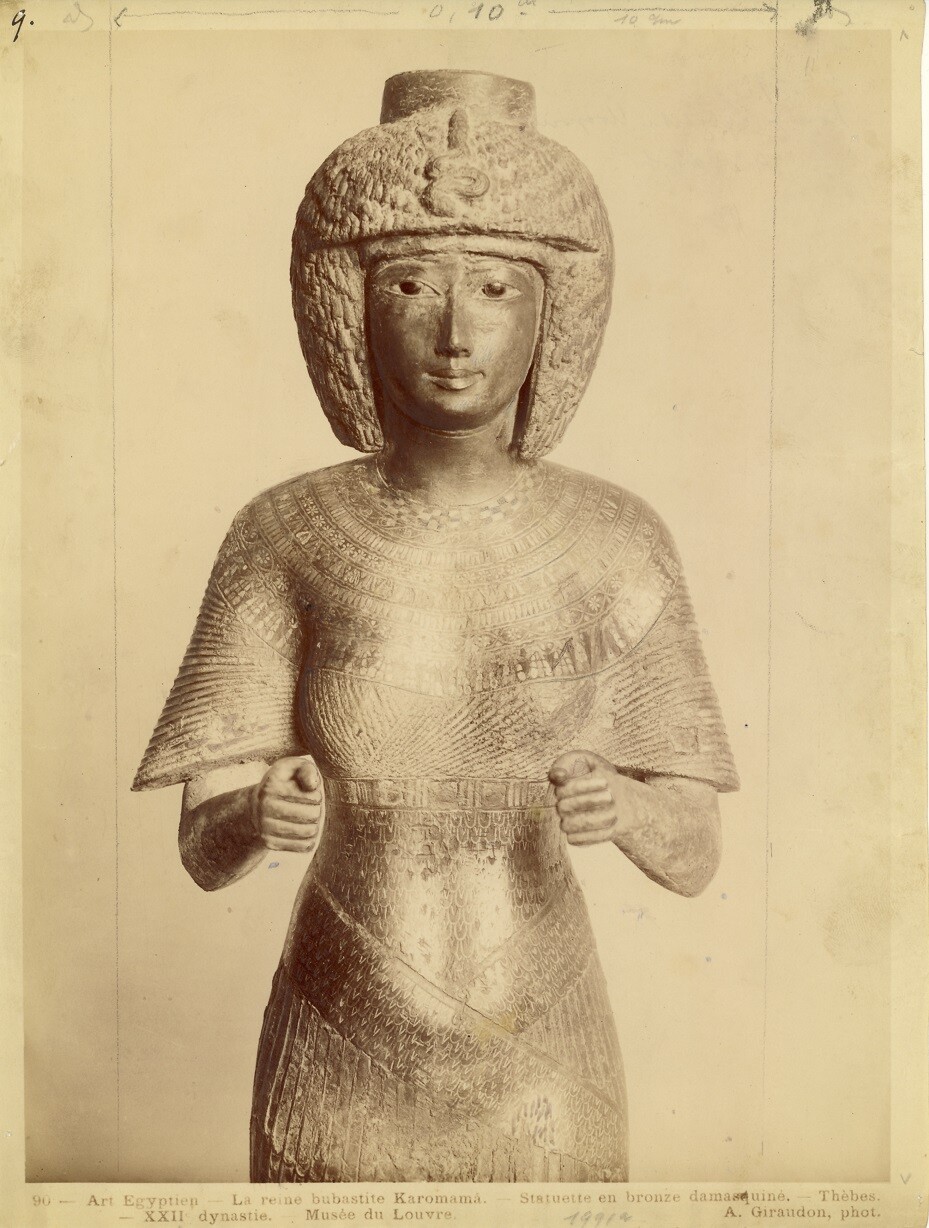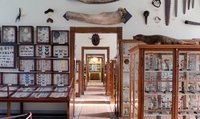Fotografie aus der Fotosammlung Moritz Meurers. Abgebildet ist ein einzigartiges Sammlungsobjekt aus dem Louvre in Paris, nämlich die mit Silber verzierte Bronzestatue der ägyptischen Königin Karomamâ, die wohl in der XXII. Dynastie zwischen 880 und 850 vor Christus lebte. Darstellungen von ihr sind vor allem aus dem Bastet-Tempel in Bubastis bekannt.
Welches Interesse Meurer an dem antiken Objekt hatte, zeigt die Reproduktion dieser Fotografie in seiner Publikation "Vergleichende Formenlehre des Ornaments" von 1909. Die Bronzefigur verfügt über einen typischen altägyptischen Halskragen, den Meurer wie andere ägyptische Textilien auch auf sein Ornament aus Blättern und Blattreihungen analysierte. Mit Bleistift hatte Meurer auf der Fotografie die Maße der Reproduktion für seine "Formenlehre" markiert.
en

